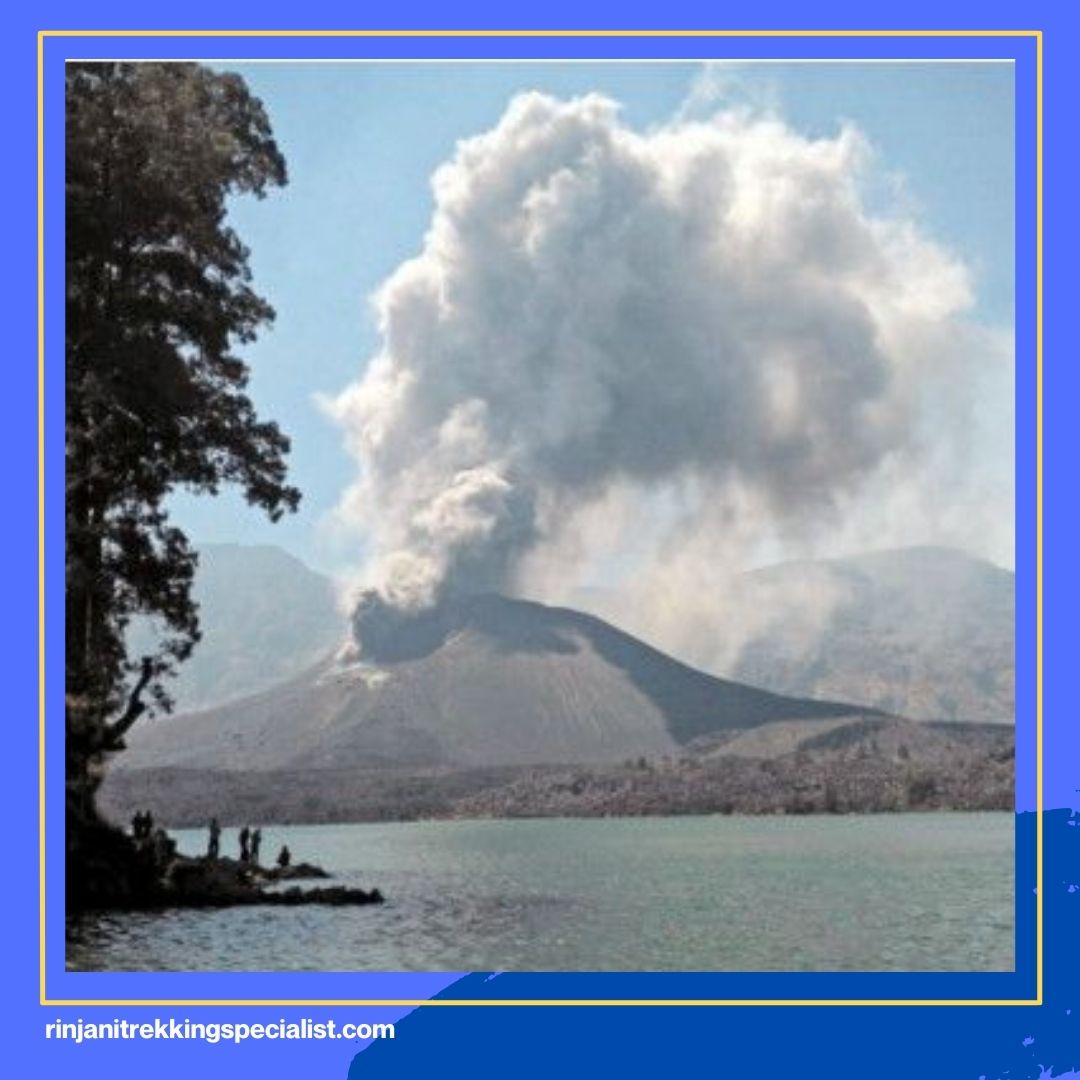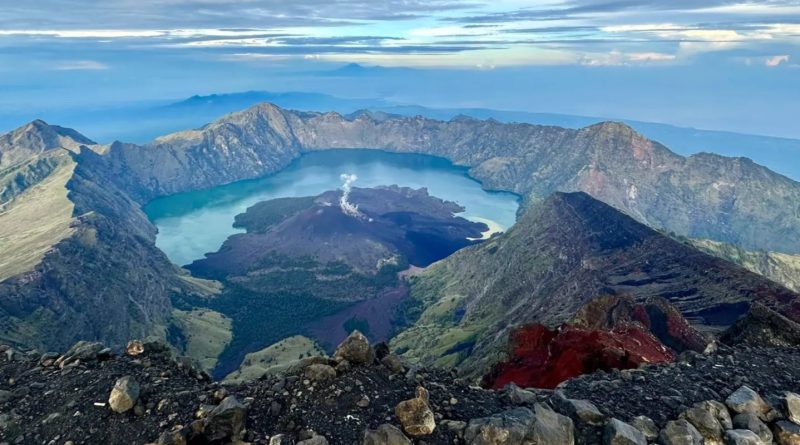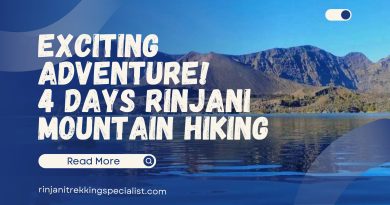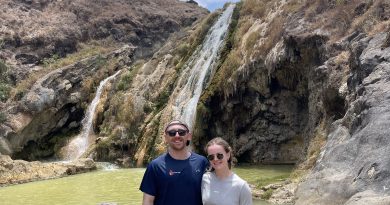Rinjani Caldera Volcanic Eruption : History and Impacts
As a volcano on the island of Lombok, Indonesia, Rinjani has erupted several times. The Rinjani Caldera conducts its volcanic Eruption activity as the second-highest volcano in Indonesia
Currently, all trekking and some non-trekking destinations are temporarily closed starting January 1, 2024. The routine closure is not directly related to the eruption but due to extreme weather changes. And the closure is a normal thing that aims to restore the ecosystem. Nature needs time to be alone for a while.
Meanwhile, the changes in weather and volcanic activity that have occurred have not diminished the beauty of Rinjani. It is evident that Rinjani National Park is the busiest and most crowded hiking trail. A number of visitors’ favorite activities include hiking, camping, swimming, taking pictures, and cycling. In addition, Rinjani National Park is the best flora and fauna education park. The forests of Mount Rinjani are tropical forests with evergreen trees and plants of high value.
Dry Season is The Ideal Time to Hike
With such extraordinary beauty, it is only natural that Mount Rinjani is a world-class tourist destination. Although this area is a very beautiful place. to visit Rinjani should pay attention to the ideal time.
The dry season is the ideal time to climb Mount Rinjani. because this time is the safest and least risky time. The risk when climbing Mount Rinjani in the rainy season is the danger of landslides and floods.
During the dry season, we will clearly see the rinjani forest habitat which is very dense with tall fir trees. A large plant ecosystem that of course can only grow in fertile mountain soil. The fertile soil comes from the volcanic activity of the Rinjani caldera.
Rinjani Volcanic Activity
Mount Rinjani is a mountain formed due to the volcanic activity of Mount Samalas several hundred years ago. Thus forming beautiful geological sites. meanwhile, Mount Rinjani is one of them. The volcanic activity of Mount Samalas formed the caldera of Segara Anak Lake, Mount Barujari, Mount Rombongan, and Mount Rinjani as the highest mountain peak.
Mount Barujari, which is a subsidiary of Mount Rinjani, has experienced volcanic activity several times. Based on the website of the geological agency of the Ministry of Energy and Mineral Resources Indonesia, there are several volcanic activities in the Rinjani National Park
First Eruption

This volcanic event occurred in 1846 when the eruption occurred within Rinjani’s caldera. including Mount Barujari and Mount rombongan.
Second Eruption
Volcanic activity that occurred in 1884. Occurring in August, the sight of smoke and flames was quite evident. In the second eruption, there are no records of casualties.
Third Eruption
This eruption of Rinjani volcanic activity occurred in 1901 at night. this activity caused the capital of Lombok, the city of Mataram to be hit by ash rain. Reportedly the sound of this volcanic eruption was quite loud. At that time there was an explosion sound from the Rinjani caldera.
The Fourth Eruption
Not far from 1901, five years later in 1906, there was volcanic activity with the same explosion in the Rinjani caldera.
Fifth Eruption
Then three years later from the fourth volcanic event, volcanic activity occurred in the Rinjani caldera area. precisely in November 1909. The impact of this volcanic activity caused the river water to become cloudy. Then thick smoke soared into the sky of Lombok.
The Sixth Eruption
This volcanic event in 1915 was in the form of smoke coming out of the Rinjani caldera. this eruption did not cause major damage.
Seventh Eruption
Volcanic events starting in late December 1943 and then continuing in May 1944 seem to be in the category of activity that has a fairly large impact. Ash rains for almost seven days resulted in crop damage. In addition, the powerful eruption released material in the form of rocks and fire rays. Even this eruption caused earthquakes in its time.
The Eighth Eruption
Eruptions of considerable strength occurred in this period. Where this volcanic event occurred in 1966. The impact of the strength of this volcanic eruption is the earthquake and lava eruption originating from Mount Barujari. Meanwhile, Mount Barujari is dubbed as the son of Mount Rinjani.
Another impact of this volcanic eruption was the failure of agricultural crops due to large ash rains. Despite this, there were no casualties or fatalities as a result of this eruption.
The Ninth Eruption
This volcanic event occurred decades later after the Rinjani caldera was considered to have slept. It turned out that in 1994, Rinjani volcanic activity again occurred in the form of an ash eruption.
Tenth Eruption
Ten years later, in October 2004, the Rinjani Caldera was active again. The eruption of the mountain released volcanic ash.
Eleventh Eruption
The volcanic activity that occurred in 2009 made residents worried. This eruption emitted thick brown smoke that reached a height of 1000 meters above Mount Barujari. From this eruption, there was also a rumbling sound and a weak boom.
The Twelfth Eruption
The volcanic eruption of Mount Barujari produced an ash eruption about 2000 meters from the top of Mount Rinjani. when viewed from the mainland it means that this eruption is as high as 6000 meters above sea level. by the PVMBG geological agency recorded a small earthquake that occurred for about 100 seconds.
Summary
Volcanic activity in the Rinjani caldera recorded 11 activities. Starting from small volcanic activity to large eruptions that resulted in several crop damage and earthquakes.
Besides that, there are also positive impacts from mountain eruptions or volcanic activity. when a volcano erupts, the elements of the eruption contain good elements for the soil. The soil in the mountains tends to be more fertile than the soil elsewhere.
So we can understand, why the Rinjani National Park is so lush with dense forests. Inside it is inhabited by many species of plants and animals. The plants in the Rinjani forest number hundreds and some have the status of protected plants. An example is the morel mushroom plant in the Mount Rinjani National Park which has high economic value.
Read here: Seven Essential Plants In Rinjani National Park
The enthusiasm of Rinjani visitors is also accompanied by the readiness of the Rinjani National Park management. By providing information facilities and completeness. In it too, gather services for climbing Rinjani such as trekking guides, porters, and other services. As Rinjani Specialist Trekking, Parman Trekker has experience guiding climbers and non-climbing visitors. We will guide visitors’ journey by providing the best service including education on the natural habitat of the Rinjani forest.









